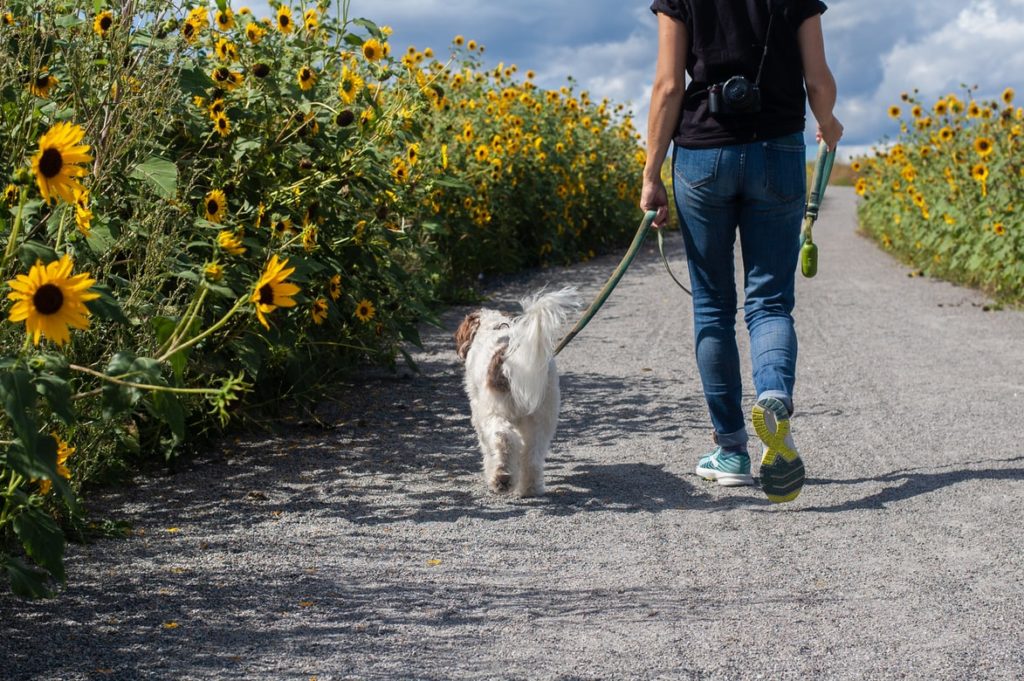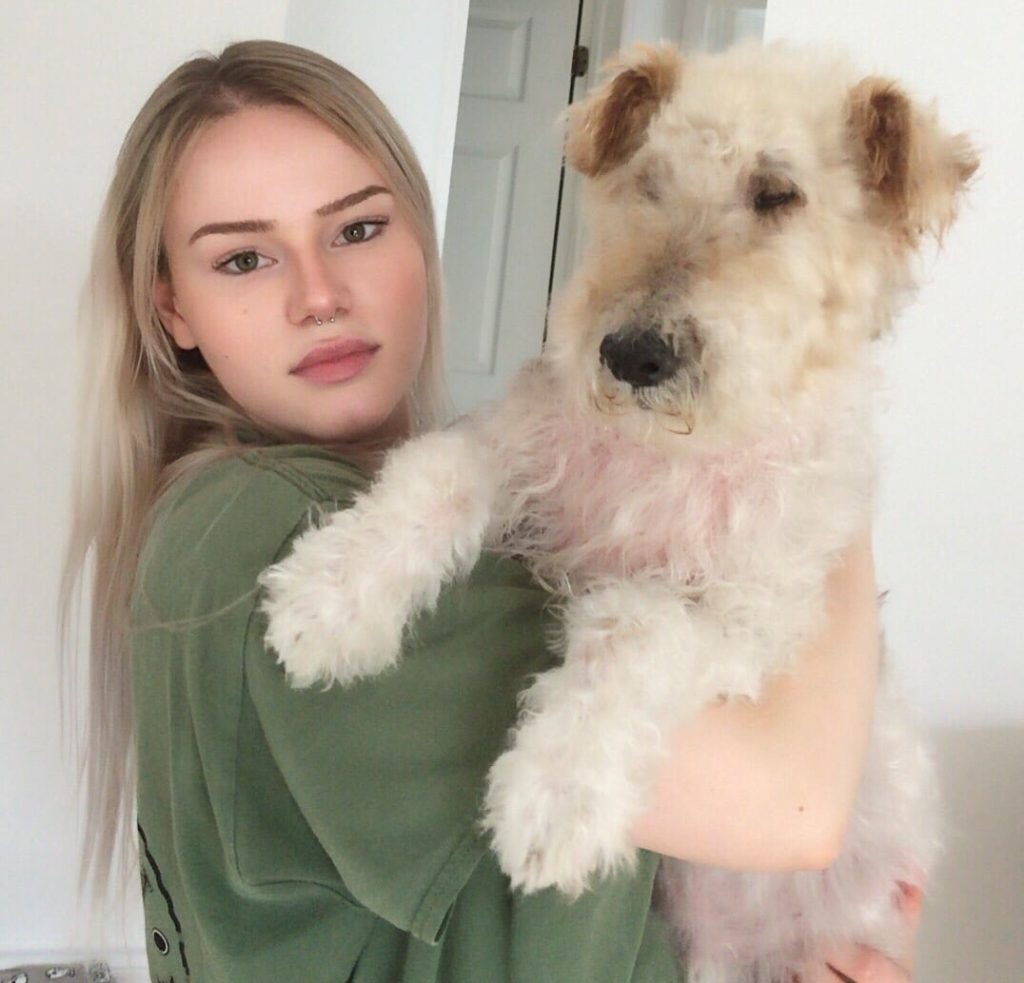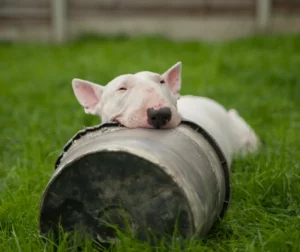Do you walk your dog or does he walk you?
Loose leash walking is not an easy task for your canine companion nor for the owner who has his arm ripped off. However, it is possible to train your dog to stop leash pulling without the use of force or punishment.
Why Does My Dog Pull on the Leash?
Contrary to popular belief, a dog pulling on the leash is not a sign that he wants to be the pack leader. The explanation is that dogs love being outside and taking walks, as it is very stimulating. They have many things to see and smell, so it’s hard for your dog to have self-control.
The dog pulls on the leash because the person is inadvertently reinforcing the behavior by allowing him to move forward even though he is pulling. It is also possible that the dog has not got enough exercise or that he finds the walk boring.
High-energy dogs, like working dogs, need intense physical activity. Moreover, a dog has a faster walking pace than ours. So he has to adapt to us, which can be boring for him.
Knowing that it is difficult for your dog to control himself and change his walking pace makes it easier to be empathetic and patient with him.
What is Loose Leash Walking For?
Loose leash walking is different from walking to heel which is used in obedience competitions. It is simply the conscious behavior of having no tension on the leash.
Loose leash walking is used to have control of your dog. It prevents the master and the dog from hurting themselves.
By teaching your dog to walk on a leash, you show him that it is not necessary to pull to move forward. Thus, the walks will be much more pleasant and less dangerous for you, for him, and for the people around.
How Can Leash Pulling Cause Injury?
As you probably know, it can be easy to injure yourself with a dog that pulls you off balance. The owner can get the dog walker’s elbow or your dog could manage to get off his leash or harness. If you have ever been in this situation, you know how stressful it can be to lose your pet and have it seriously injured.
A dog pulling his owner on a leash can cause him to tumble down the stairs and dislocate his wrist or shoulder. The dog can injure his trachea or spine due to the force applied.
Canine chiropractors have witnessed many cases of spinal problems in dogs that pull their leashes.
Which Equipment Should I Own to Walk My Dog?
If you’re worried about starting to train your dog for fear that he’ll pull you too hard, there are a few pieces of equipment available to help you out.
The harness is the essential equipment for walking a dog that pulls. It is safer than a collar because it distributes the pressure over the whole body. Thus, it avoids pressing on the trachea or the cervical.
In addition, there are harnesses with a front and back attachment that will help you with your training. By using the front ring, your dog will be forced to turn when pulling and will therefore not be able to move forward.
It is recommended not to use a retractable leash for leash, as it can be dangerous and not good for training. Equip yourself with a strong leash that is comfortable for your hands, such as a leather leash.
For dogs that pull very hard, you can use a head halter as a last resort. It is easier to have control over your dog when he is restrained by his head, like a horse. The halter can cause serious injuries to your dog’s neck, so know how to use it properly. Likewise, he must have a positive association with his halter, otherwise, walks will become unpleasant for your dog.
What to do Before Walking Your Dog?
Walking on a leash without tension is one of the most difficult behaviors to teach your dog. He must ignore a considerable amount of stimuli, which requires a great deal of self-control.
Here are some tips before training loose leash walking your dog.
#1 Spend His Energy
A dog that constantly pulls on the leash needs to spend his energy. Give him a physical and mental activity to do before the walk. It will be much easier to train him not to pull since he will be able to be more attentive to you. For example, you can throw a ball to him, give him an interactive game, and teach him a new trick.
An activity that requires concentration will spend your dog’s energy faster than physical activity. You can give your dog a Kong or a licking mat to stimulate him mentally before going on a walk.
#2 Wait For Him to Calm Down
If a dog is too excited before going outside, ask him to sit down and only open the door once he’s calm. By making sure he’s calm before going outside, he will be able to have better self-control when outside.
Is Your Dog Scared of Walks?
Your dog may be anxious or reactive. If this is the case, this means that a stressful situation happened that scared him during a walk or that he is not used to being outside.
This problem can take a long time to work on, which is why the help of a dog trainer would be favorable. It is difficult, if not impossible, for a dog suffering from this type of problem to enjoy a walk.
Thus, there is no need to get angry at him so as not to add even more stress.
How to Teach Loose Leash Walking to a Dog?
A dog pulls on a leash because he understands that this is how he will move forward. The dog thinks “We move forward when I pull, so I must pull to move forward”. This means that by continuing to move forward when he pulls you, you are teaching him to pull without even meaning to!
To teach a dog to stop leash pulling, you can use the stop-and-be-still technique and the reverse redirection technique.
The key to success is consistency, which means that every time you walk your dog, use one of the 2 techniques that fit best to your dog. For your dog to enjoy the walk, he needs to smell, walk at his own pace and spend his energy. This is why the training sessions must be in segments with pauses between the training so that the walk does not become boring for your dog.
#1 The Stop and Be Still Technique
Come to a full stop every time there is any tension on the leash. Start walking again only when there is no more tension. This way, your dog will understand over time that he won’t move forward if there is tension on the leash.
#2 The Reverse Redirection Technique
If you find the stopping technique too slow, you can use this technique. When your dog pulls on the leash, say “Let’s go”, turn around, and start walking in the opposite direction, without jerking on the leash.
Motivate your dog to follow you by talking to him in a playful voice to get his attention. When your dog follows you and there is no tension on the leash, turn around and continue on your way. By doing this, you are showing him, with your body language and vocal cues, that he will not be able to go in the direction he wants if he pulls.
You can also reinforce your dog’s decision not to pull by rewarding him with a treat when he’s near you and when he’s looking at you.
An Advanced Technique
After your dog begins to understand that he can’t pull forward, make unpredictable movements. In other words, instead of using the technique and saying “let’s go” and turning around, you can walk in a circle or do an 8-figure. This requires your dog to be aware of your movements and the direction in which you’re heading.
Remember to always reward your dog at your height when he listens to you and every time he looks at you. You can reward him with a high-value dehydrated treat. The more you have a strong bond with your dog, the more he will want to walk near you.
Does My Dog Have to Be Kept On a Leash?
Even if it can be annoying to tie up your dog, it is recommended to keep it on a leash for different reasons. On the other hand, it is good to be able to have a safe place where your dog can be free, stretch his legs, spend his energy, and walk at his own pace.
Most municipalities require dogs to be kept on a leash in public places.
If you are on a trail in the forest and there is no one around, it is still best to keep your dog on a leash or, at least, close to you here’s why:
- Your dog may encounter a bear, skunk, or other wildlife.
- Between May and June, deers leave their fawn alone out of fear. The mother will return when there is no more danger. Therefore, it should not be touched and if it crosses the path of a dog, the fawn could die.
- You might cross paths with someone who is afraid of dogs or who is with a reactive dog. Some people wander to more remote and peaceful places to train their anxious or aggressive dogs. So even if your dog is friendly, he could scare the other dog (or worse) and, in the process, upset his training.
If you decide to let him free, teaching your dog a strong recall cue allows you to control him and avoid dangerous situations. Be persistent! Even if you have tougher days, the effort will be worthwhile for you and your dog.
Bibliographic Sources:
STILWELL, Victoria (2013). «Train Your Dog Positively», Berkeley, Ten Speed Press.






